Specimen collection of the Department of Zoology
- Sponges (Hoshino Collection)
- Cnidarians
- Parasitic worms (Platyhelminthes, Aschelminthes)
- Mollusks (Kawamura Collection, Sakurai Collection)
- Cephalopods (Squid and Octopus)
- Polychaete
- Crustacea
- Echinoderms
- Butterflies and Moths
- Bees and Flies
- Dragonflies (Asahina Collection)
- True Bugs
- Beetles
- Spiders, Mites, Scorpions, etc.
- Fishes
- Herptiles
- Birds
- Marine Mammals
- Terrestrial Mammals
- Yoshimoto Collection
Sponges (Hoshino Collection)
The Museum houses approximately 1,100 sponge specimens studied by the late Dr. Takaharu Hoshino at the Mukaishima Marine Biological Laboratory, which used to be attached to the Faculty of Science in Hiroshima University. These specimens were collected from various parts of Japan, primarily along the coast of the Seto Inland Sea, as well as from areas such as Kyushu, Shikoku, the Kii Peninsula, and the Boso Peninsula. The collection includes 70 type specimens of new species described by Dr. Hoshino between 1977 and 1985. While the collection consists mainly of dried specimens, permanent slides were also made for many of them. This collection is considered a vital resource for future research on Japanese sponges.
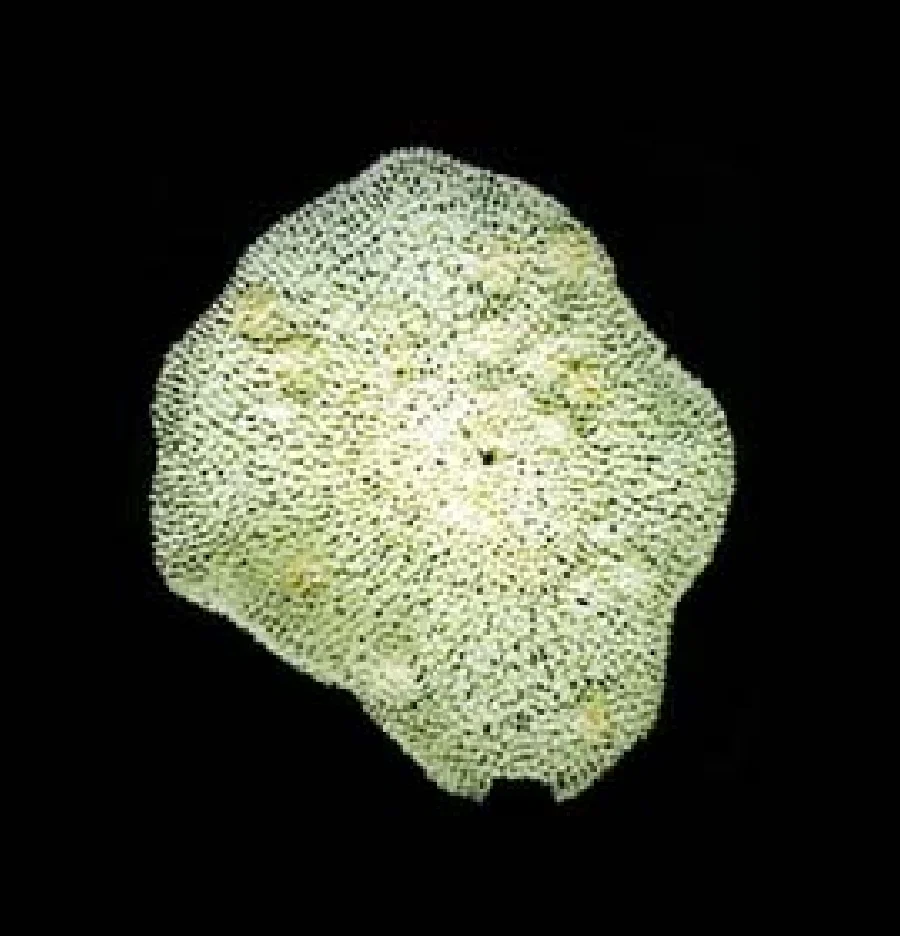 Dysidea minna Hoshino,1985
Dysidea minna Hoshino,1985
Cnidarians
Cnidarians are characterized by their simple body structure and the presence of cnidocytes, and are classified into hydrozoans, cubozoans, scyphozoans, and anthozoans. The cnidarian collection comprises about 900 specimens, including 4 type specimens, primarily consisting of species from the shallow marine regions of Japan collected during the Museum's past surveys of the Japanese archipelago. In recent years, the Museum's collection of cnidarians from the waters near Japan has been steadily enhanced. In addition to shallow-water species, it now also includes specimens collected during the Museum's deep-sea faunal surveys, which began in 1993. In cnidarians, which have few taxonomic traits, the morphology of their cnidocytes can be a key trait for distinguishing them from one another. However, these cnidocytes are often lost during standard fixation and preservation processes. Therefore, we are currently making efforts to create specimen slides that preserve cnidocytes semi-permanently and to store them alongside conventionally fixed specimens.
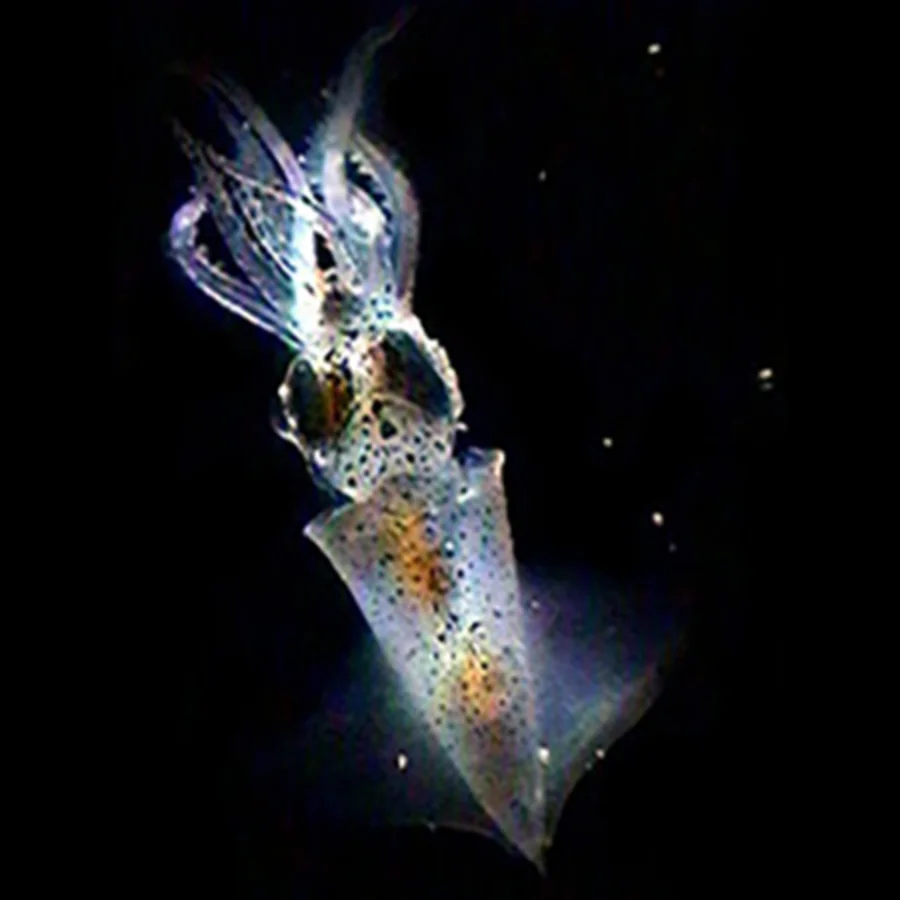 Larvae of the family Enoploteuthidae
Larvae of the family Enoploteuthidae
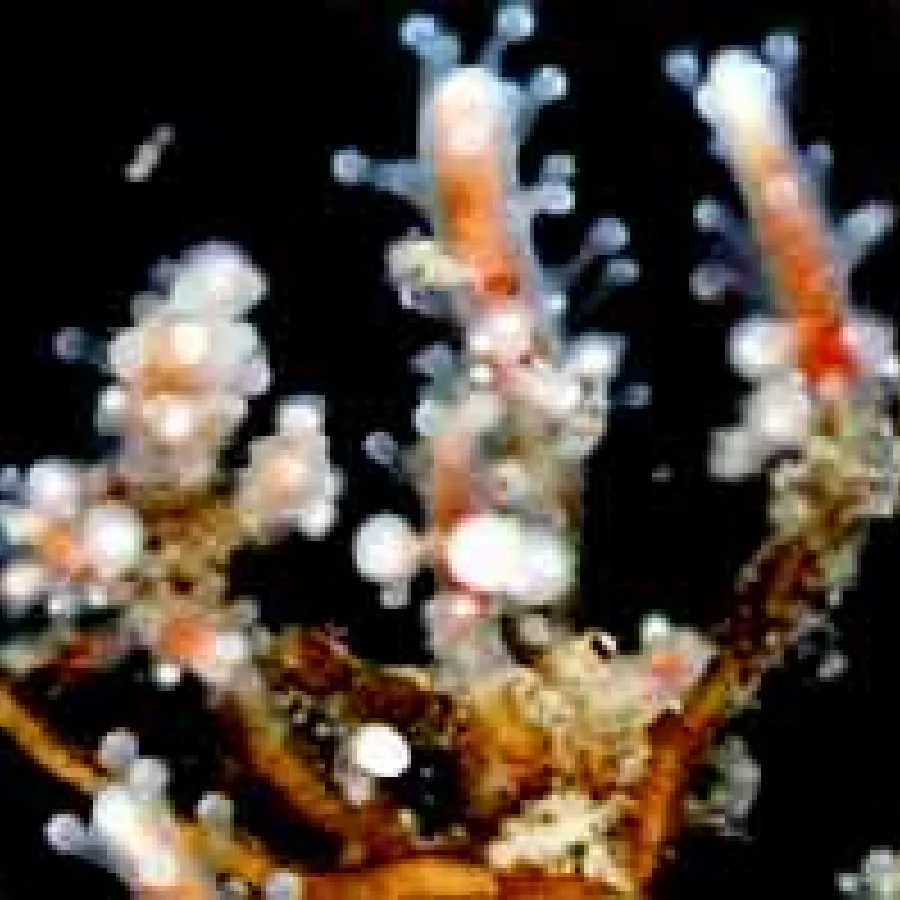 Hydrozoan Coryne pusilla
Hydrozoan Coryne pusilla
Parasitic worms (Platyhelminthes, Aschelminthes)
Most organisms in the classes Monogenea, Trematoda, and Cestoda of the phylum Platyhelminthes, and the class Acanthocephala of the phylum Aschelminthes, are parasitic. Additionally, the class Nematoda of the phylum Aschelminthes consists of many free-living and parasitic species. The parasitic organisms in these taxonomic groups are sometimes collectively referred to as parasitic worms.
The core of the Museum's parasitic worm specimen collection is the extensive collection of marine fish parasites assembled by Dr. Masaaki Machida, former Director of the Department of Zoology (in office 1968–1997) and current Curator Emeritus of the Museum. Dr. Machida conducted extensive fieldwork not only in Japan but also in many other countries, particularly in Southeast Asia, engaging vigorously in collecting and classifying specimens. Recently, the Museum's deep-sea fauna surveys, conducted since 1993, have further enriched the collection with new specimens, including new species of deep-sea fish collected from Suruga Bay. On the other hand, the core of the parasitic worm collection from terrestrial animals consists of several hundred specimens of the nematode of genus Setaria, donated by Dr. Chuzaburo Shoho of Takarazuka City, Hyogo Prefecture.
The parasitic worm collection comprises approximately 10,000 specimens, including type specimens. In 1987 and 1991, we published a catalog of type specimens from Japan. We continue to actively expand our collection and respond to requests for specimen registration and loans from both Japan and abroad. Concurrently, we are preparing to create a database of the several thousand publications in our holdings concerning our specimens and the taxonomy of parasitic worms.
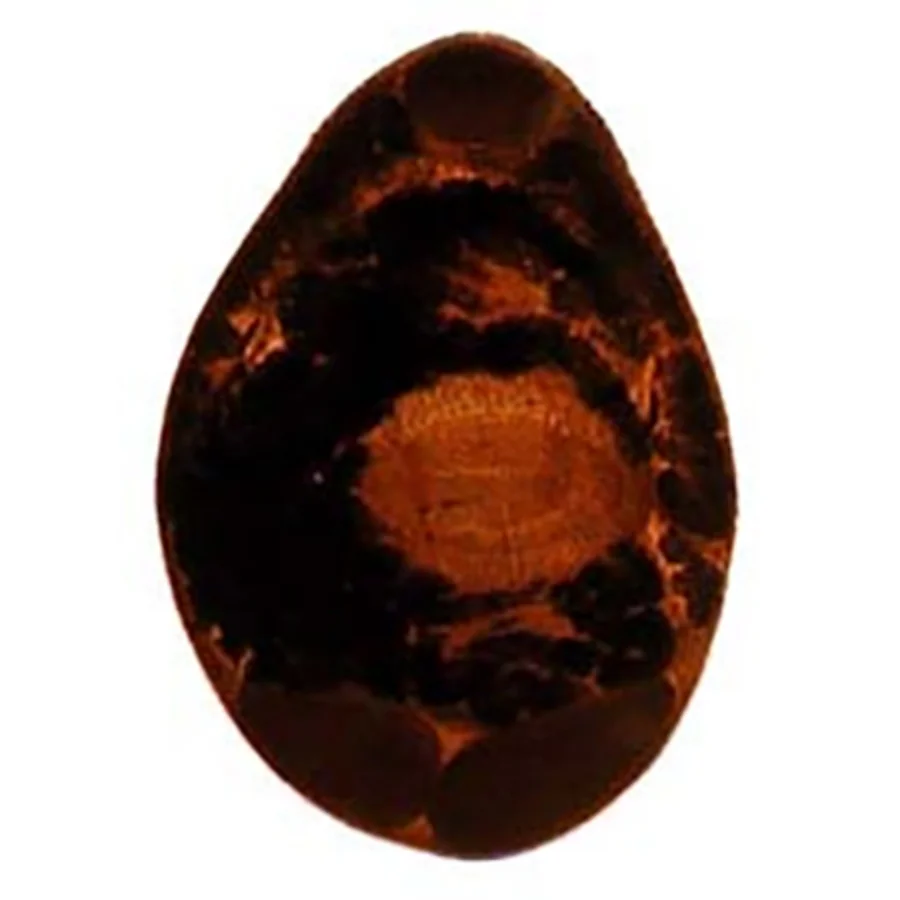 Parasitic flukes of deep-sea fish from Suruga Bay 1
Parasitic flukes of deep-sea fish from Suruga Bay 1
 Parasitic flukes of deep-sea fish from Suruga Bay 2
Parasitic flukes of deep-sea fish from Suruga Bay 2
Mollusks (Kawamura Collection, Sakurai Collection)
Kawamura Collection
While making significant contributions to the business world, Mr. Ryosuke Kawamura (1898–1993) also began collecting shells around 1930. Focusing on areas including the North Pacific, coastal Choshi, Sagami Bay, coastal Kochi, Amami Oshima, Taiwan, and the Philippines, he built a world-class collection of over 100,000 specimens representing more than 10,000 species. This vast collection was donated to the National Museum of Nature and Science during his lifetime in 1983, prompting a special exhibition to mark the occasion.
Boasting the largest number of species and specimens for a private collection in Japan, this collection is also distinguished by its comprehensiveness. While many collections tend to focus on particularly beautiful groups, the Kawamura Collection features specimens from a wide range of regions, representing most taxonomic families—both marine and terrestrial—and even includes numerous micro-species. The collection also features specimens of the same species from many different localities. The collected specimens have been studied in detail not only by Mr. Kawamura himself but also by expert researchers such as Dr. Tadashige Habe, former Director of the Department of Zoology and currently an Honorary Member. As a result, 40 new species have been described, all named in his honor. Most of the type specimens on which these new species descriptions were based are now also housed in the Museum.
Shells have long been popular collector's items among a wide range of people, leading to the creation of many varied and distinctive collections. However, many academically valuable collections that have been painstakingly assembled are often dispersed after just one generation. Museums play a crucial role in permanently preserving such collections in their entirety and making them available for research. The Museum's collection of mollusk specimens also includes those donated by private collectors. The most iconic of these are the Kawamura and Sakurai Collections.
 Conus milneedwardsii kawamurai
Conus milneedwardsii kawamurai
Sakurai Collection
Dr. Kinichi Sakurai (1910–1993) was a world-renowned mineralogist who was awarded a Doctor of Science from the University of Tokyo for his significant achievements. Alongside this career, he also managed a long-established poultry restaurant in Kanda, Tokyo. In the field of malacology, he also authored numerous papers, including descriptions of many new species, and amassed a vast mollusk collection of over 6,000 species. The mollusk specimens, which had been carefully stored in the Sakurai Specimen Room alongside the mineral specimens, were donated to the National Museum of Nature and Science in 1994 in accordance with the late doctor's wishes.
A key feature of the Sakurai Collection is its limited geographical scope, focusing on the region around Japan and Taiwan. It is a comprehensive collection that includes nearly every known species from this area. Even forms considered to be geographical variations are meticulously collected if they are recognized as distinct, and specimens of the same species are collected from as many localities as possible. Due to habitat destruction, many species that were once common are now considered valuable specimens. The academic value of this collection is enhanced by the large number of type specimens it contains. A total of 62 new (sub)species were described by Dr. Sakurai himself, as well as by other researchers such as Dr. Habe. Their type specimens are still frequently consulted by numerous malacologists, including those from overseas.
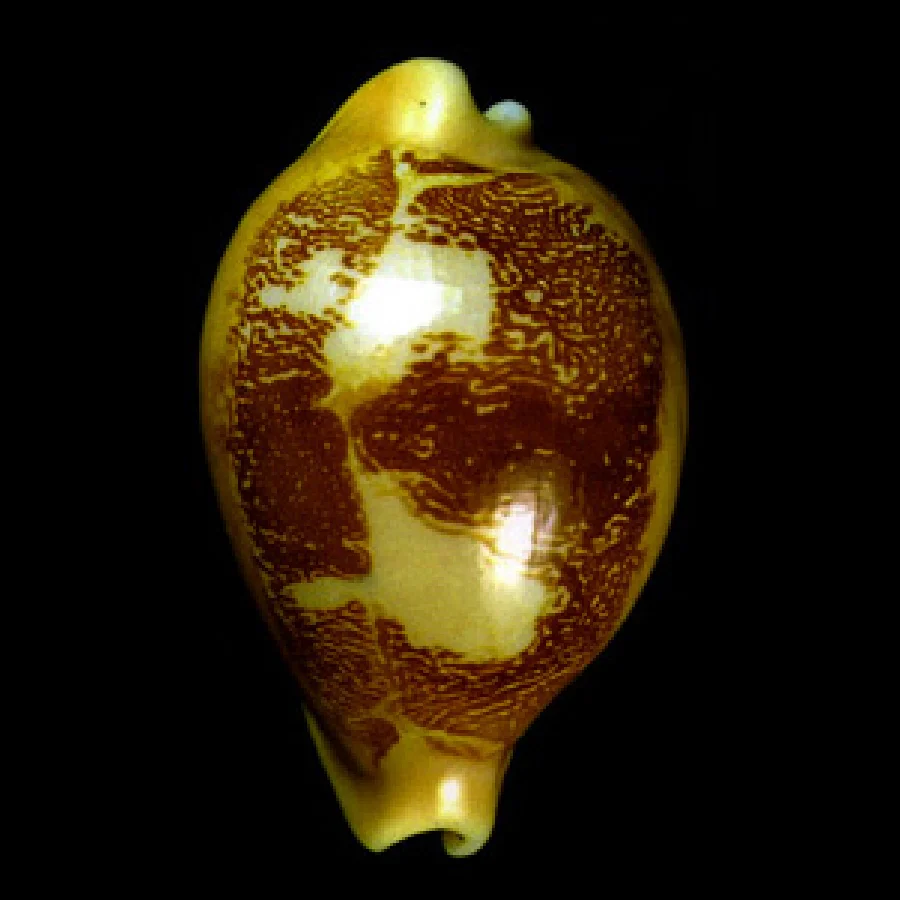 Austrasiatica sakuraii
Austrasiatica sakuraii
Cephalopods (Squid and Octopus)
Squids and octopuses belong to the same phylum (Mollusca) as bivalves and gastropods and are grouped together in the class Cephalopoda. All are marine and are not found in freshwater. Having adapted to diverse marine environments, cephalopods inhabit a vast range of habitats, from coastal and shallow waters to offshore and deep seas, and from polar to tropical regions. About 750 to 780 species have been reported from the world's oceans, with around 170 species known from the waters off Japan. Compared to the tens of thousands of species of mollusks, they are a small group. However, this group includes the giant squid, the largest invertebrate, as well as many commercially important species such as the Japanese flying squid.
The cephalopod collection consists of approximately 3,500 registered items, representing 15,000 specimens. The collection includes type specimens for 19 species and comprises a total of 240 species. While it may not compare to the collections of the American Museum of Natural History or the Natural History Museum in London, its cephalopod specimen collection is considered substantial among the world's major natural history museums. All of these registered specimens are cataloged in a searchable and filterable database.
 Larvae of the family Enoploteuthidae
Larvae of the family Enoploteuthidae
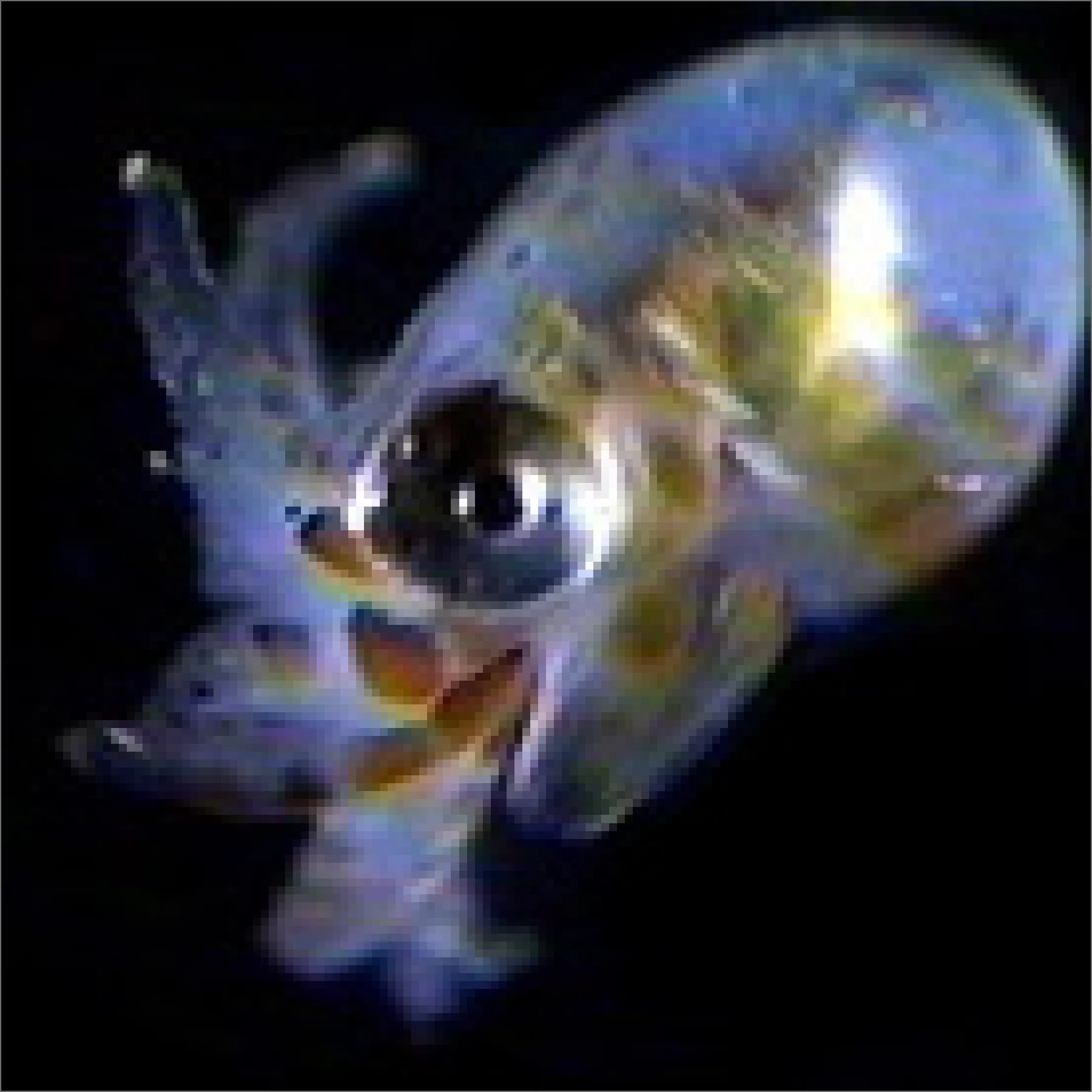 Octopus larvae
Octopus larvae
Polychaete
The Museum's collection of annelid polychaetes currently exceeds 110,000 specimens. This polychaete collection was amassed by Dr. Minoru Imajima, former Director of the Department of Zoology (in office 1963–1994) and currently an Honorary Member of the Museum. Dr. Imajima himself collected these specimens through the Museum's project, "Comprehensive Scientific Research on the Natural History of the Japanese Archipelago," aboard the research vessels "Hakuho-Maru" and "Tansei-Maru" of the University of Tokyo’s Atmosphere and Ocean Research Institute, during surveys in Micronesia funded by a Grant-in-Aid for Scientific Research from the Ministry of Education, Science, Sports and Culture in 1980, 1982, and 1984. As a leading authority on polychaete taxonomy, Dr. Imajima receives identification requests from across Japan, and a vast number of specimens remain unregistered in storage. The collection includes 2,037 type specimens, 202 of which are holotypes.
 Feather duster worms
Feather duster worms
Crustacea
Ranging in size from microscopic species less than a millimeter long to giant crabs, crustaceans thrive by skillfully utilizing every type of aquatic environment, from freshwater to the sea. Their great diversity of lifestyles and reproductive methods makes them fascinating subjects for biological research, while many larger species are also of significant importance to fisheries science.
The Museum's collection of shrimp, hermit crab, and crab specimens (Decapod Crustacea) comprises approximately 15,000 lots. Our Mysidacea and Cumacea collection includes specimens from the collections of Professor Emeritus Masaaki Murano of the Tokyo University of Fisheries and Professor Emeritus Shigeo Gamo of Yokohama National University. In addition, the Museum holds a vast number of unsorted and unregistered specimens, making our crustacean collection one of the most extensive in Japan in terms of both the number of species and specimens.
In addition to specimens collected through the Museum's "Comprehensive Scientific Research on the Natural History of the Japanese Archipelago" project, our collection contains many specimens from other institutions, such as fisheries research institutes of the Fisheries Agency, prefectural fisheries experimental stations, universities, and environmental survey companies. The collection is also enriched by specimens from several key sources: those obtained during new fishing ground development surveys conducted around the world by the Marine Fisheries Research and Development Center, deep-sea specimens collected by the research vessels "Hakuho-Maru" and "Tansei-Maru" of the University of Tokyo’s Atmosphere and Ocean Research Institute, and specimens collected along the coasts of Southeast Asia and Micronesia during overseas academic surveys funded by a Grant-in-Aid for Scientific Research from the Ministry of Education, Science, Sports and Culture.
The collection holds approximately 2,900 crustacean type specimens, of which 285 specimens (species) are holotypes.

Takeda et Marumura, 1997

conspiciocellus Okuno et Takeda,1992
Echinoderms
Currently, about 4,500 specimens have been registered. Among the Museum's echinoderm specimens, the most comprehensive is our collection of Ophiuroidea, which includes the Irimura Collection. The Irimura Collection consists of 2,605 items donated to the Museum in 1992 by Dr. Seiichi Irimura, a leading authority on the taxonomy of Japan’s Ophiuroidea (echinoderms). The collection comprises 428 species in 138 genera and 16 families, focusing primarily on species native to Japan. This represents approximately one-fifth of all known Ophiuroidea species. The collection also includes paratype specimens that Dr. Irimura himself described as new species. A catalog of the Irimura Collection was published by the Museum in 1995. The type specimens in our collection include the holotypes of several species. Among them are "Belyaevostella hyugaensis" (Fujita, Stampanato & Jangoux, 1994), a deep-sea brittle star that lives attached to sunken wood on the seafloor, "Ophioplocus giganteus" (Irimura & Yoshino, 1999), a large brittle star that inhabits the coral reefs of Okinawa at depths accessible to scuba divers and was only recently discovered, and "Astrophiura wanikawa" (Fujita & Hendler, 2001), a species with thin, short arms that at first glance does not resemble a brittle star.
To further enrich our echinoderm specimen collection, we are working to identify and register specimens obtained from various surveys conducted by the Museum, including surveys of the Japanese archipelago, investigations of deep-sea fauna, and overseas surveys focused primarily on Southeast Asia.
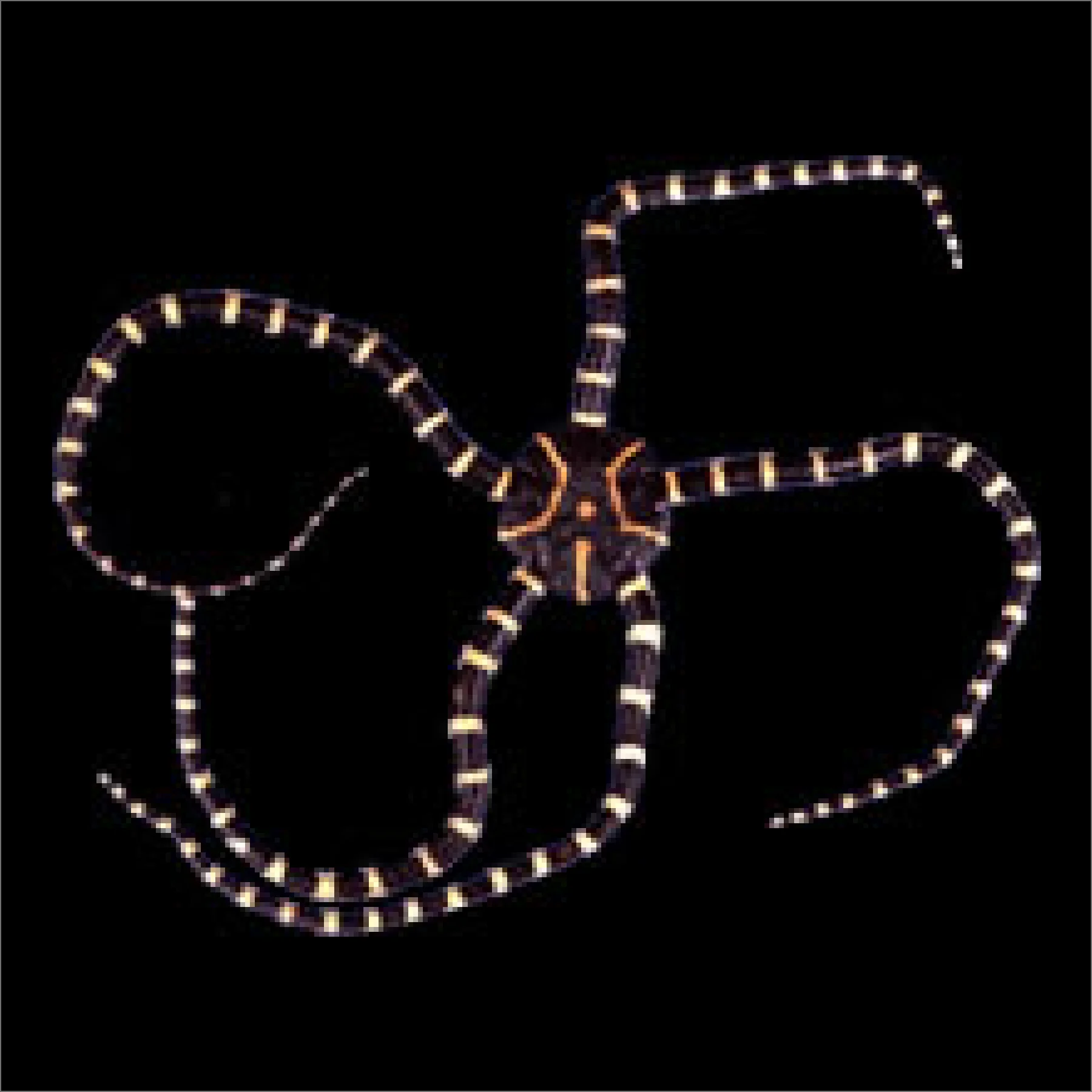 Ophioplocus giganteus Irimura & Yoshino,1999 (NSMT E-3748)
Ophioplocus giganteus Irimura & Yoshino,1999 (NSMT E-3748) Astrophiura wanikawa Fujita & Hendler,2001(NSMT E-4232)
Astrophiura wanikawa Fujita & Hendler,2001(NSMT E-4232)
Butterflies and Moths
The foundation of our butterfly and moth (Lepidoptera) collection consists of specimens of butterflies from Japan and around the world, collected before World War II by Mr. Shoichi Satake and Dr. Inokichi Kubo. Few insect specimens from the early 20th century remain in Japan today. In 1973, the Museum also received Dr. Waro Nakahara's Butterflies of the World Collection as a donation. This collection includes many of the world's most iconic large and beautiful species, such as birdwing and morpho butterflies. This collection served as the basis for "Selected Butterflies of the World," a large illustrated book co-authored by Dr. Yoshihiko Kurosawa, a former staff member of the Museum and currently an Honorary Member. The Nakahara Collection also includes 5,500 specimens of the order Neuroptera, which Dr. Nakahara studied throughout his life. This part of the collection contains approximately 100 type specimens. The Museum's collection of domestic butterflies is based on the collection bequeathed by Mr. Kei Hayashi in 1972.
On the other hand, the moth collection grew rapidly thanks to overseas academic surveys, a program initiated in 1977 and funded by Grants-in-Aid for Scientific Research from the Ministry of Education, Science, Sports and Culture. The numerous specimens collected in Nepal, India, Thailand, Malaysia, the Philippines, Taiwan, and Vietnam are utilized by researchers both domestically and internationally. Consequently, the number of type specimens has also surged, currently approaching 2,000. Among the Museum's domestic moth specimens is the collection of Dr. Toshiya Ebato, bequeathed in 1987.
As a result of these collection and research activities, the Museum's lepidopteran collection now totals approximately 170,000 specimens.
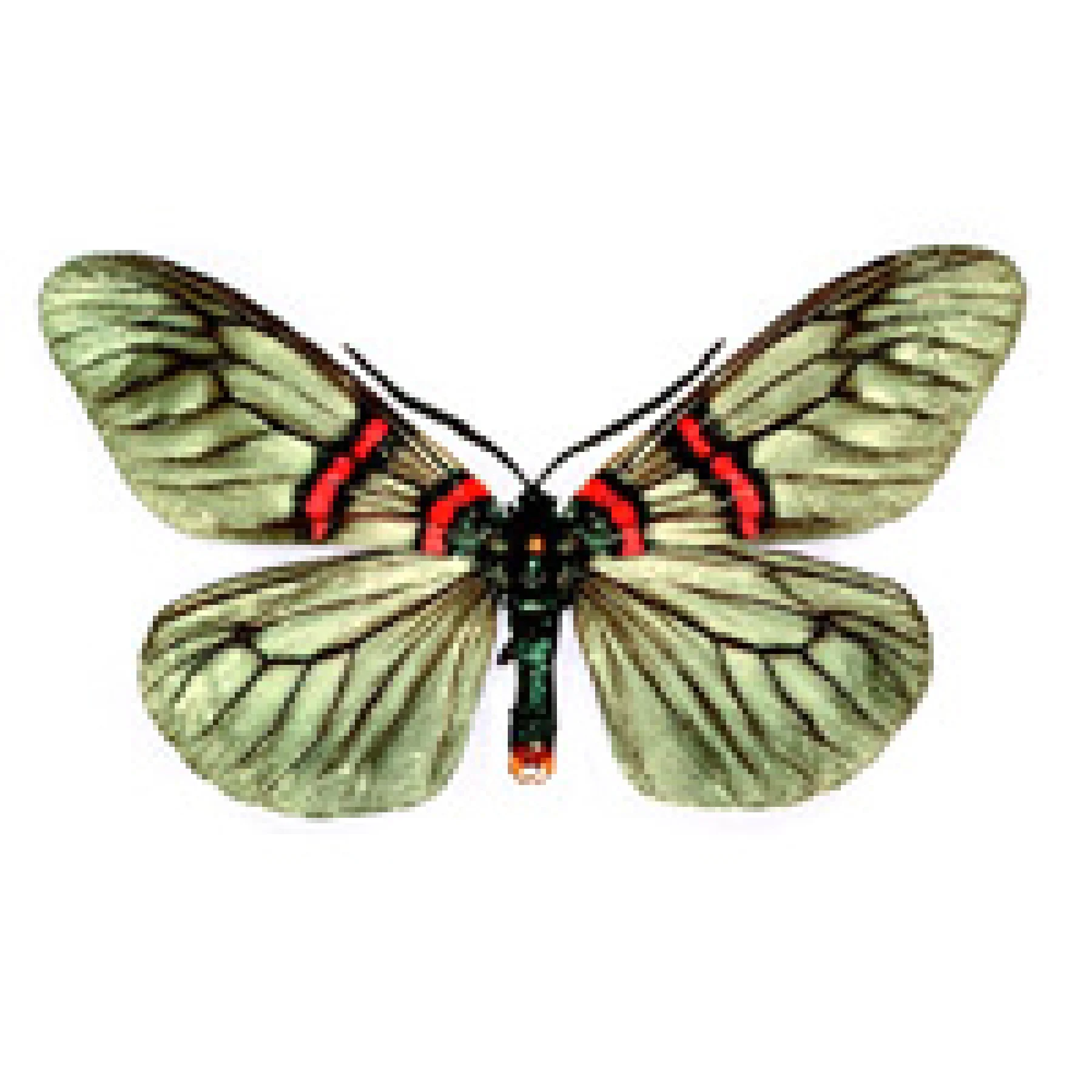
Bees and Flies
Bees and flies are one of the most prosperous groups of animals on Earth and are deeply connected to human life. Our museum houses one of the largest collections of bees and flies in Japan, totaling 180,000 specimens, which are frequently used by researchers both in Japan and abroad.
The bee collection is based on collections bequeathed by Mr. Minoru Yoshioka, Mr. Masao Yamanaka (specializing in Aculeata bees), and Mr. Satoru Sato, who conducted research alongside their main occupations. The collection was later enriched by former staff member Dr. Ryosuke Ishikawa (Professor Emeritus of Tokyo Metropolitan University) and now holds over 50,000 specimens, including more than 1,200 type specimens. In particular, the collection of East Asian sawflies is exceptionally comprehensive, featuring specimens from Japan as well as the Russian Far East, South Korea, Taiwan, and Vietnam.
The fly collection consists of approximately 129,000 specimens, including over 1,000 type specimens. The core of this collection is a donation from Tokyo Medical and Dental University in 1990. This collection consists mainly of specimens gathered by the research group of Mr. Rokuro Kano, a former president of the university, from locations across Japan, Southeast Asia, and the South Pacific. Its holdings of Calyptrate flies, a group that includes many important sanitary pests, are considered world-class in both quality and quantity.
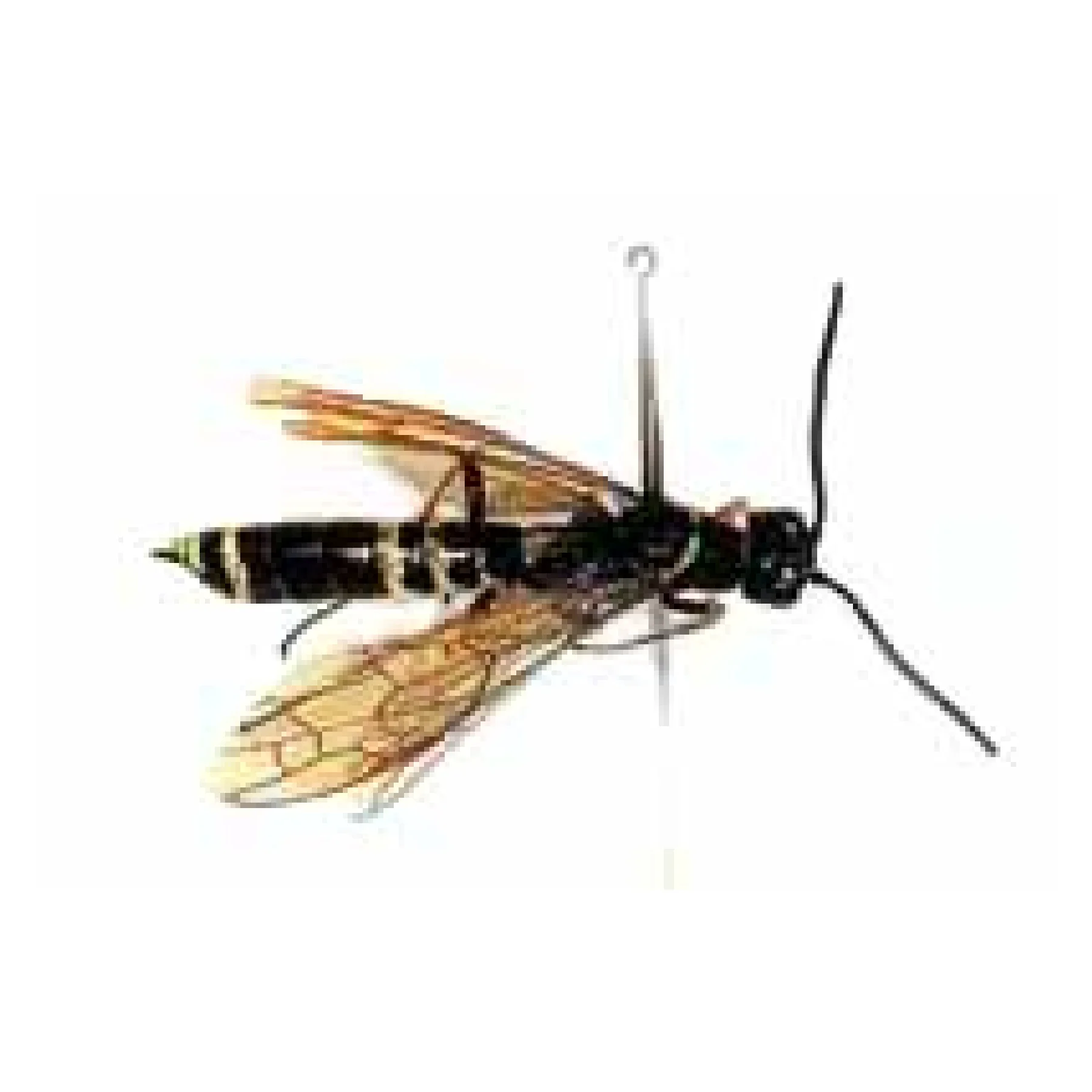
Dragonflies (Asahina Collection)
This collection consists of approximately 110,000 insect specimens donated to our museum in 1998 by Dr. Shojiro Asahina (1913–), a world-renowned authority on dragonfly taxonomy and an Honorary Member of the National Institute of Health (currently the National Institute of Infectious Diseases).
The core of this collection is approximately 60,000 Odonata specimens collected from around the world, including approximately 1,300 type specimens used by Dr. Asahina when he described new species, making it a world-class collection in both quality and quantity. Among these, type specimens such as the Mortonagrion hirosei, discovered in 1971 at Lake Hinuma in Ibaraki Prefecture, and the Hemicordulia ogasawarensis, an endemic species from the Ogasawara Islands designated as a Natural Monument and currently at risk of extinction, are particularly important.
 Dr. Shojiro Asahina's research laboratory at his home
Dr. Shojiro Asahina's research laboratory at his home
True Bugs
The Department of Zoology does not have experts in all animal groups. Moreover, the richness of the collection is greatly influenced by their presence or absence. The Heteroptera collection is a prime example, as its holdings have increased rapidly over the past 20 years following the appointment of an expert. The collection currently holds over 100,000 specimens and continues to grow by hundreds to thousands each year. The number of type specimens has also been steadily increasing, and now totals nearly 300. Sixty-five percent of the specimens are native to Japan, with the majority of the remainder from Southeast Asia. Recently, a significant number of specimens have been acquired through overseas academic surveys funded by a Grant-in-Aid for Scientific Research from the Ministry of Education, Culture, Sports, Science and Technology (MEXT). Since many of Japan's true bugs are of the so-called "southern type," these Southeast Asian specimens are invaluable for their study.
 Poecilocoris Lewisii
Poecilocoris Lewisii
Beetles
Beetles, which include familiar insects such as Japanese rhinoceros beetles, stag beetles, and ladybugs, are a very large group that accounts for over 40% of all insect species. About 400,000 species are known worldwide, with about 9,000 recorded from Japan.
The Museum's beetle collection currently comprises about 130,000 specimens. Approximately 60% of these are native to Japan, while the rest have been widely collected from various parts of Asia—including China, Taiwan, Vietnam, and Nepal—as well as from Russia, Europe, and South America. The collection also includes a large number of type specimens, which are fundamental to taxonomic research, with holotypes alone accounting for about 1,800 of these. Among these are precious type specimens such as Cheirotonus jambar, Japan's largest beetle, discovered in Okinawa in 1983, and Ishikawatrechus intermedius, which was discovered in the Ochi Cave in Kochi Prefecture and is now believed to be extinct since the cave has been destroyed. The foundations of this collection were laid by Dr. Yoshihiko Kurosawa, former Director of the Department of Zoology (currently an Honorary Member). It has also been greatly enriched by donations from external researchers such as Mr. Osamu Nomura, Dr. Tadao Kano, and Dr. Hiromichi Kono.

Spiders, Mites, Scorpions, etc.
The so-called "bugs" other than insects include arachnids such as spiders, mites, and scorpions, as well as myriapods such as centipedes and millipedes. These groups are also incredibly diverse, much like insects. The number of mite species on Earth, for example, is estimated to be between 300,000 and 400,000. Arachnids are permanently preserved in ethyl alcohol, while many mites, due to their small size, are preserved as specimen slides. Currently, the Museum holds about 73,000 specimens of this group, including nearly 1,000 holotype specimens used for the description of new species.
Furthermore, the number of specimens continues to grow by about 10,000 each year through collection and donations. The Museum not only holds an unparalleled number of specimens among museums in Japan but also serves as a vital hub for research on these animals, frequently receiving inquiries from researchers overseas. However, only a small percentage of these specimens have been studied. The vast majority remain unprocessed, quietly waiting in the specimen room to be examined one day.
 Liphistius owadai Ono et Schwendinger
Liphistius owadai Ono et Schwendinger
Fishes
The Museum's fish collection is one of the most important in Asia and the Western Pacific. The computer-registered portion of the collection alone comprises 1.3 million specimens, representing 5,000 species. Among these are 1,130 type specimens representing 310 species, used in the original descriptions of new species. While about 3,900 species of fish native to Japan are currently known, the Museum's collection houses 3,300 of them. The specimens are utilized every year by numerous researchers from both Japan and overseas. Additionally, many researchers register type specimens with the Museum when reporting new species.
The Museum's fish collection includes specimens dating back to the Meiji era (1880s), as well as those from species that are now extinct. Moreover, distribution maps of Japanese freshwater fishes have been created based on data from computer-registered specimens. These distribution maps reveal shifts in the distribution of Japanese freshwater fishes, such as the nationwide spread of black bass, an introduced species, since the 1960s. Data for freshwater fish specimens that have been computer-registered is available online. We are also making steady progress on the computer registration of our marine fish specimens, and we plan to make the data available online in the near future.
The fish collection continues to grow each year, thanks to domestic and international collection and research by the Museum's researchers. Much remains unknown about fishes, particularly marine species. In fact, new species are discovered and described each year in the waters around Japan. There are many species whose spawning ecology and distribution remain unknown. To expand our fish database for Japan and the western Pacific region, it is necessary to further enhance the Museum's fish collection.
For more details, please see the fish database [UODAS(リンクを新しいタブで開きます)].

 The type specimen of Zu cristatus, a new species described in the early 20th century.
The type specimen of Zu cristatus, a new species described in the early 20th century.
Herptiles
The herptile collection comprises approximately 4,000 specimens, most of which are preserved in liquid. Featuring specimens collected by Mr. Moichiro Maki, it has one of the world’s rarest collections of Southeast Asian herptiles. In recent years, we
have particularly focused on expanding our collection of skeletal specimens, with the latest example being the research and storage of a Malayan gharial that died at the Nogeyama Zoo in Yokohama.
In addition to collecting specimens, the laboratory maintains its function as a gene bank, where the collected genetic material is used as a foundational resource from the natural world to support research in molecular phylogenetics and cell biology.
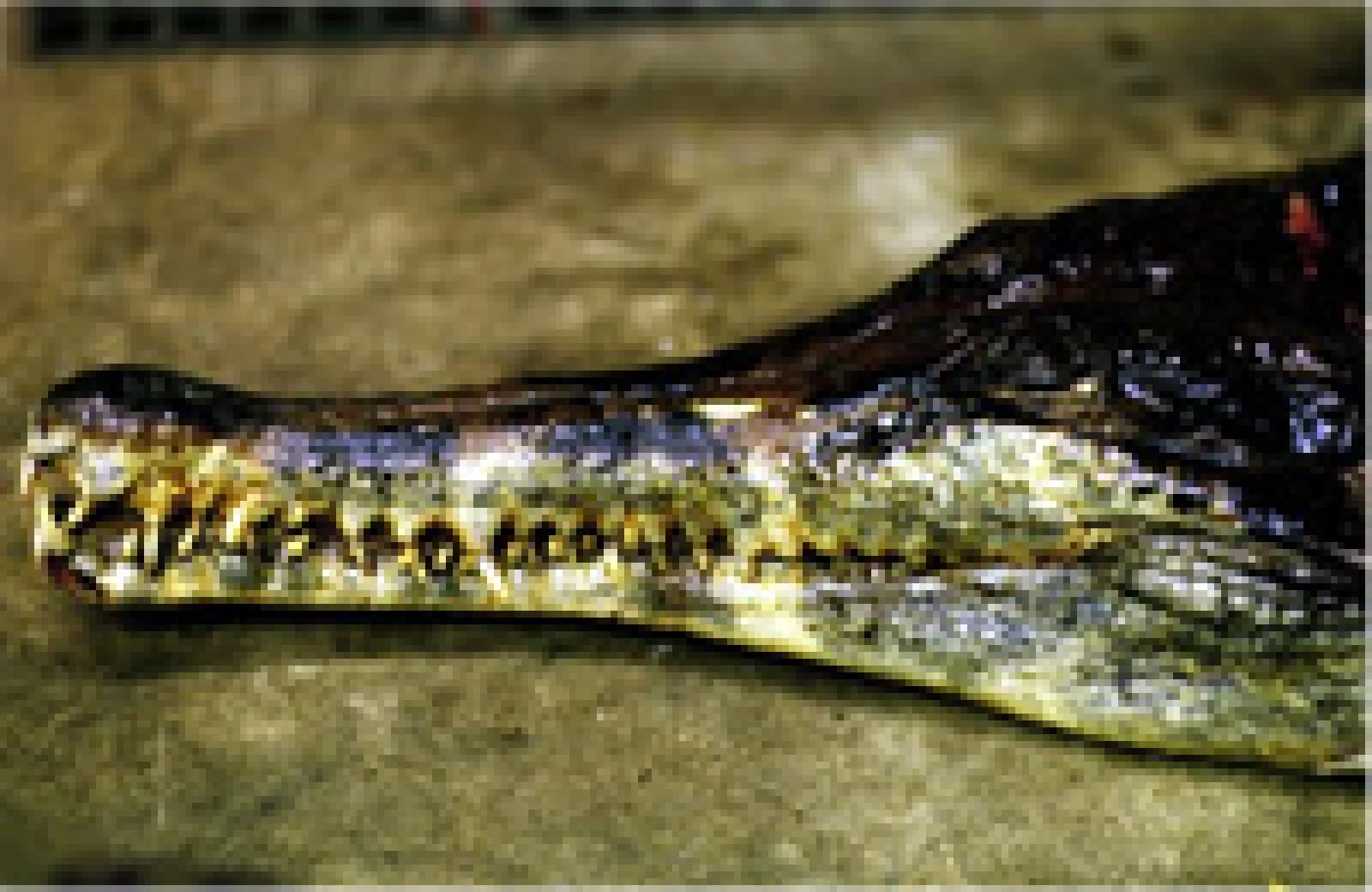 Malayan gharial
Malayan gharial
Birds
The bird specimen collection includes approximately 5,000 study skins, primarily from the Japanese archipelago and East Asia, as well as specimens from Pohnpei, Micronesia, and Brazil
The collection includes many historically valuable items, such as 120 specimens collected by the First Scientific Expedition to Manchoukuo (1933) and 280 specimens collected in Shanxi Province, China, in 1942 by Mr. Yukiyasu Kiyosu, one of the pioneers of bird research in Japan. In recent years, in addition to taxidermy specimens, we have also focused on collecting tissue samples for DNA analysis, and this collection has now grown to nearly 900 samples.
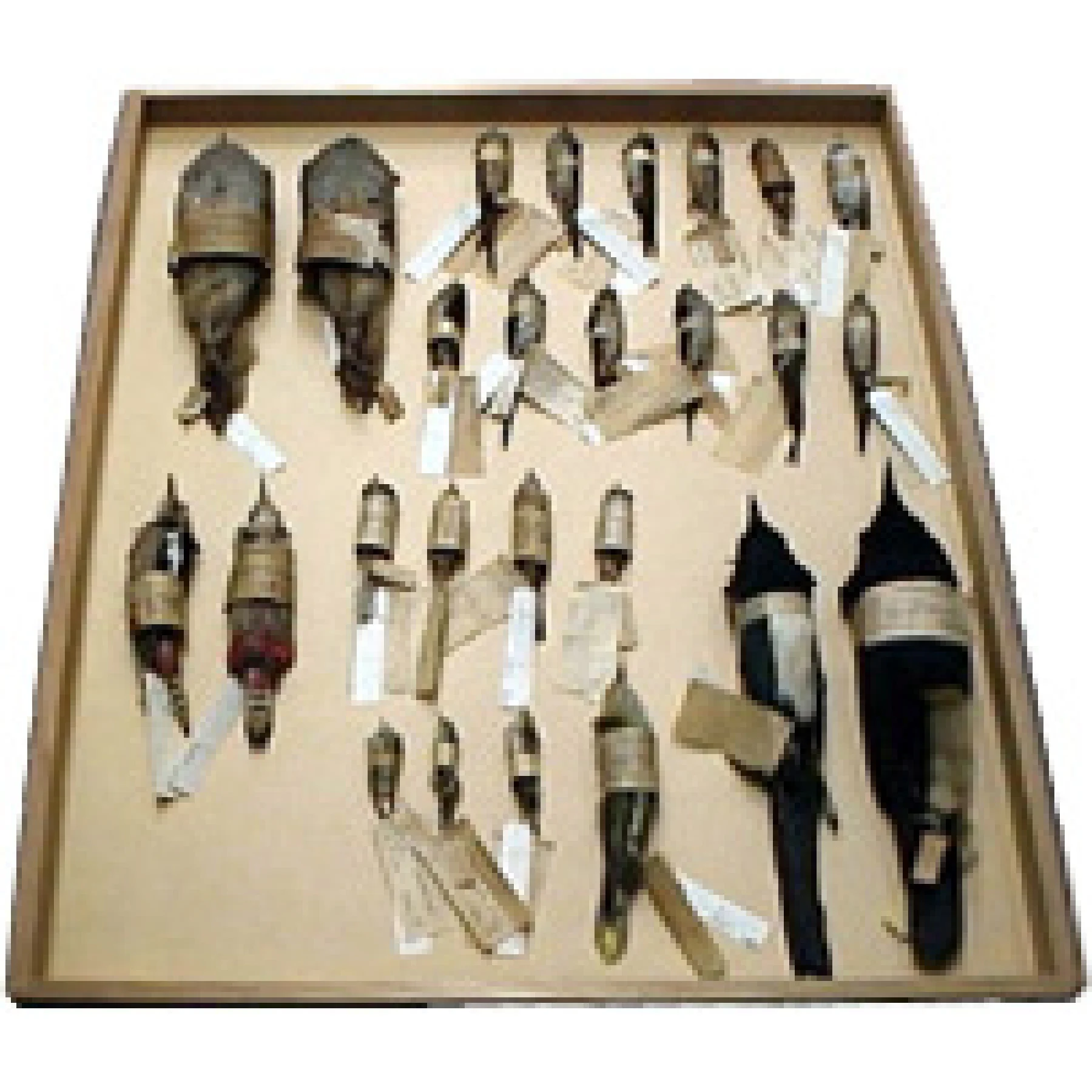 Specimen Box
Specimen Box
Marine Mammals
The collection includes about 3,600 marine mammal specimens. The breakdown includes over 3,000 cetaceans (whales and dolphins), over 500 pinnipeds (seals and sea lions), and about 30 sirenians (dugongs and manatees). While the majority are skeletal specimens, the collection also includes liquid-preserved specimens (mainly of fetuses), baleen plates from baleen whales, and taxidermy specimens of pinnipeds. Important specimens also include liquid-preserved stomach contents and parasitic organisms. Some of the articulated skeletons are currently on display in locations such as the Ueno Main Building and the Shinjuku Branch Training Research Center.
The core of the collection consists of over 1,000 specimens collected by Dr. Nobuyuki Miyazaki, a former chief researcher (currently a professor at the University of Tokyo), primarily comprising Pacific white-sided dolphins and Dall's porpoises. Additionally, over 400 specimens collected by the late Dr. Masaharu Nishiwaki (a former professor at the University of Tokyo) and Dr. Toshio Kasuya (a professor at Mie University) were transferred from the University of Tokyo’s Atmosphere and Ocean Research Institute and constitute a major part of the collection. Our current specimen collection efforts are centered on stranded specimens, and our research places a strong emphasis on the comparative anatomy of marine mammals.
 Marine Mammal Specimen Storage
Marine Mammal Specimen Storage
 Type specimen of the ginkgo-toothed beaked whale
Type specimen of the ginkgo-toothed beaked whale Terrestrial Mammals
The collection includes about 30,000 specimens of terrestrial mammals. This collection provides an overview of mammalian diversity, with a focus on the Japanese archipelago, Southeast Asia, and the Pacific Rim. Specimens such as the skeletal remains and taxidermy of the now-extinct Japanese wolf and thylacine, as well as holotypes of the critically endangered Japanese river otter, serve as a tragic record of the consequences of environmental destruction. In recent years, however, we have also focused on preparing specimens from zoo animals. Examples include the giant panda and giraffe donated by Ueno Zoo, and the Indian rhinoceros and Asian elephant donated by Tama Zoological Park, both located in Tokyo. These specimens are used in functional morphology research, yielding significant findings.

Yoshimoto Collection
In 1998, Mr. Watson T. Yoshimoto, a resident of Hawaii, USA, donated a world-class collection of taxidermied large mammals to be used for research and education. The collection consists of over 400 taxidermy specimens amassed by Mr. Yoshimoto over a long period. It includes many specimens from regions that are now difficult to survey and possesses a high academic value comparable to that of Western museum collections. Some of these specimens were featured in the 1998 special exhibition, "Friends of the Earth, Part 2: Wild Vibrancy," where they drew considerable public attention.
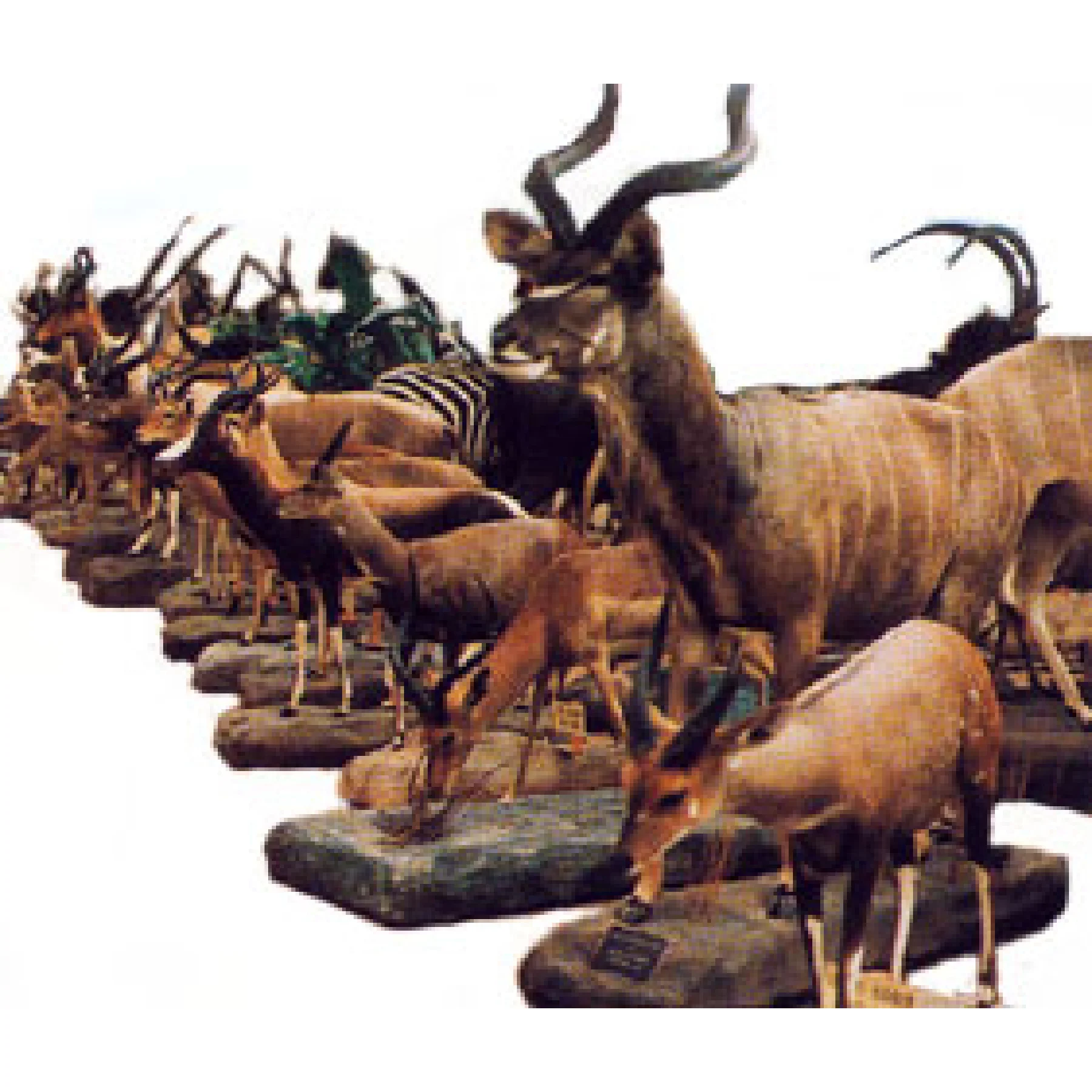 Yoshimoto Specimen Collection
Yoshimoto Specimen Collection